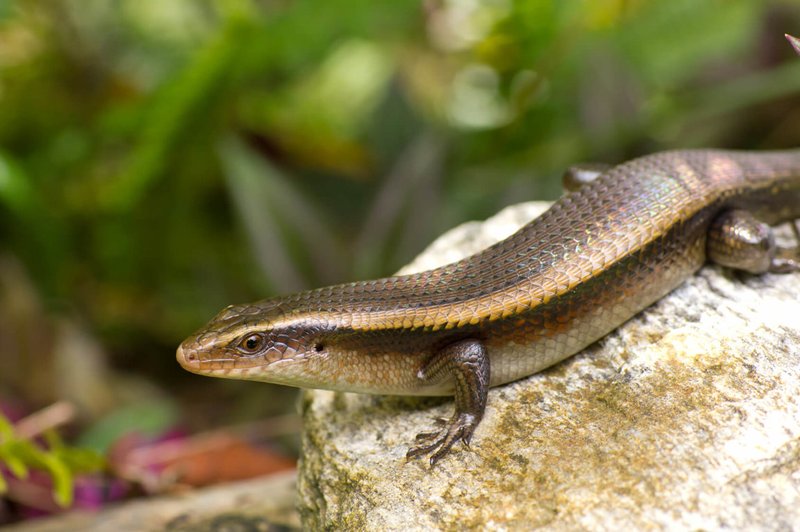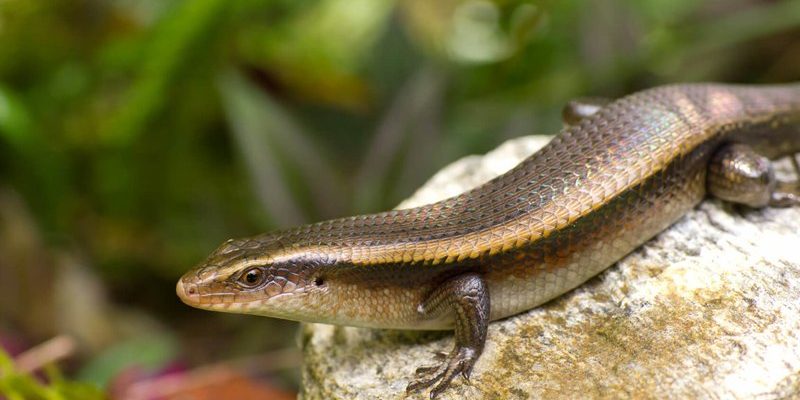
You might be surprised to learn that skinks belong to the family Scincidae, which encompasses more than 1,500 species worldwide. Whether you’re interested in getting one as a pet or just curious about their habits, understanding the facts can really enhance your appreciation for these reptiles. Let’s bust some myths and shine a light on what skinks are all about!
Myth 1: Skinks Are Just Slow Lizards
Honestly, one of the biggest misconceptions about skinks is that they’re all sluggish creatures. While it’s true that some skinks prefer to lounge around, many are surprisingly quick when they want to be. For instance, the green tree skink can dart across branches and leaves with impressive speed.
– Speedy Escape Artists: Skinks use their agility to escape predators. If you see one, don’t be fooled by its laid-back appearance; that little guy can zip away in an instant!
– Active Lifestyle: Many skinks are diurnal, meaning they’re active during the day. They spend their time foraging for food or basking in the sun, showing a level of energy that might surprise you.
You might be wondering how this myth came to be. Part of the confusion likely stems from skinks’ tendency to bask in the sun or hide under logs and rocks. Their calm demeanor gives the impression of sluggishness, but once they sense danger, they can be very spry!
Myth 2: All Skinks Have Smooth, Shiny Skin
Another common belief is that all skinks boast smooth and shiny skin. While many do have that sleek look, skin texture varies widely among different species. For example, the common blue-tongued skink sports rougher scales, which help it blend in with its natural surroundings.
– Camouflage Artists: The texture and color of a skink’s skin can change depending on where they live. This adaptation is crucial for evading predators and hunting prey.
– Skin Functions: Skinks’ skin isn’t just about looks; it serves essential functions too. Their scales help prevent water loss, which is especially important in dry environments.
So, while the glossy appearance is certainly common, it’s not a universal trait among skinks. The diversity in their skin types adds to the allure of these reptiles.
Myth 3: Skinks Are Dangerous Pets
You might hear people say that skinks can be aggressive or dangerous pets. Here’s the thing: that’s mostly a myth. Most skinks, especially those bred in captivity, are quite docile and easy to handle.
– Friendly Nature: Take the blue-tongued skink, for example. These guys are known for their calm demeanor and even enjoy interacting with their humans. They can make fantastic pets for families or individuals looking for a low-maintenance reptile.
– Handling with Care: Like any pet, it’s essential to handle skinks gently and with respect. Sudden movements or rough handling can startle them, but with patience, they typically warm up to their owners.
This myth could stem from stories about wild skinks defending themselves when threatened. While they do have a defensive posture (like puffing themselves up), they aren’t dangerous to humans.
Myth 4: Skinks Only Eat Bugs
Many people think that skinks are strictly insectivores, feasting solely on bugs. In reality, their diets can be quite diverse. Depending on the species, skinks eat a variety of foods, including fruits, vegetables, and other small animals.
– Omnivores at Heart: Some skinks, like the eastern skink, enjoy munching on fruits and leafy greens, making them omnivores. This varied diet can contribute to their health and wellbeing.
– Feeding in Captivity: If you’re considering keeping a skink, it’s important to understand their dietary needs. A balanced diet may include insects, commercial skink food, and fresh veggies to ensure they get all the nutrients they need.
This myth likely arises from the fact that many skinks do indeed enjoy a good bug snack. However, their flexible diet means they can thrive on more than just insects.
Myth 5: Skinks Are Hard to Care For
Now, let’s talk about the belief that skinks are difficult to care for. Here’s the thing: while they do have specific needs, many species are surprisingly easy to maintain, especially for beginners.
– Simple Housing: A well-structured habitat can be simple to create. Most skinks require a spacious enclosure with hiding spots, a heat source, and a water bowl.
– Routine Care: Their care routine involves regular feeding, monitoring temperature and humidity, and cleaning their habitat. Once you establish a routine, it’s pretty straightforward!
Many first-time reptile owners find skinks to be a great jumping-off point for learning about reptiles. Their manageable care requirements make them suitable for both novices and experienced keepers.
Myth 6: All Skinks Are the Same Size
You might think skinks are all the same size, but that’s far from the truth. Skinks vary significantly in size, from tiny species measuring just a few inches to larger ones that can reach over two feet long.
– Diverse Sizes: The giant skink, also known as the Solomon Islands skink, can grow quite large, while the small, forest-dwelling skinks might fit comfortably in your palm.
– Size Impacts Habitat: Larger skinks may require bigger enclosures and different care than smaller varieties. It’s essential to research the specific skink species you’re interested in to understand their size and habitat needs.
This size myth might come from seeing common pet species, which tend to be on the smaller side. However, the wild world of skinks has a size range that’s anything but uniform.
In the world of reptiles, skinks stand out for their unique features and personalities. They’re often misunderstood, leading to myths that can cloud their reputation. By busting these myths, we can appreciate the diverse and fascinating nature of skinks. Whether you’re considering adopting one as a pet or just want to learn more about them, knowing the facts helps separate truth from fiction.
So, the next time you hear someone say skinks are just slow lizards or only eat bugs, you’ll be ready to set the record straight! Embrace your curiosity about these captivating creatures, and enjoy the journey of learning more about the skink family.

